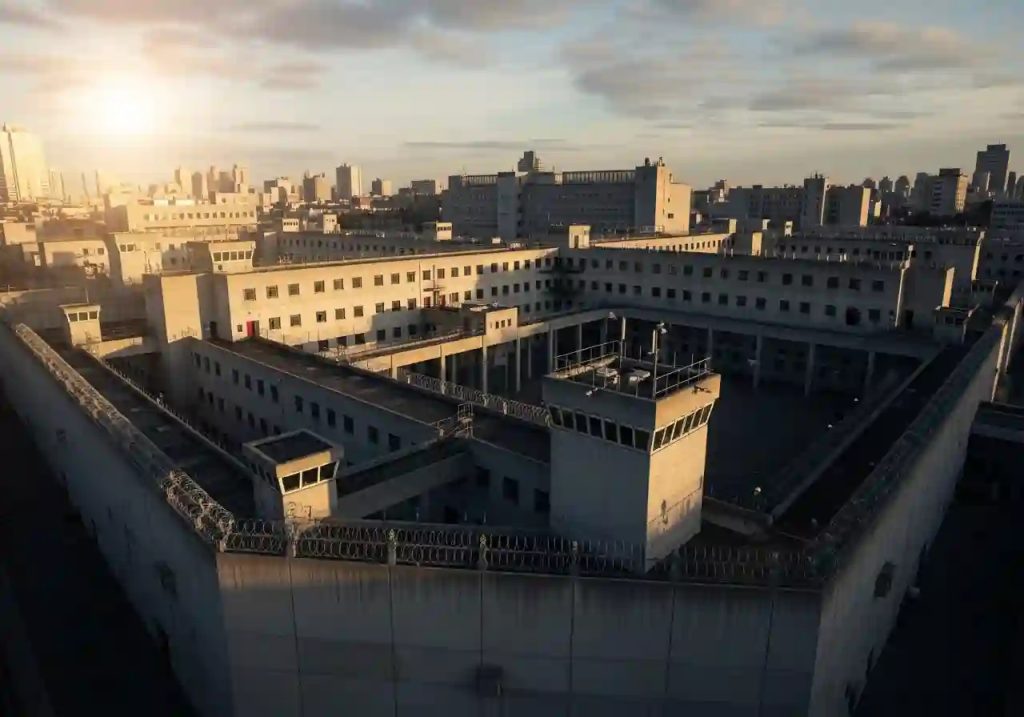New York City’s detention system, already under intense scrutiny, is witnessing a sharp surge in violence, according to recently updated city data. The trend underscores one of the most urgent challenges facing the city’s future leadership and reveals a marked deterioration in safety for both detainees and staff.
The latest statistics show a worrying rise across multiple indicators. The rate of violent incidents among detainees rose by nearly 10% in the last fiscal year compared to the previous one, while serious injuries increased by 12%. The impact on correctional staff was even more severe — assaults rose by 31% and serious staff injuries by 21%.
These figures come amid growing turmoil at the city’s main jail complex and continued uncertainty over its future. Earlier this year, a federal judge described “unprecedented” levels of violence and chaos when the city was stripped of full control over the facility. Meanwhile, plans to close the existing complex and build smaller borough-based jails have been indefinitely halted under the current city administration.
NYC Jail Violence Reaches Decade High Amid Leadership and Staffing Failures
Addressing the detention system’s crisis will be one of the most urgent and complex issues facing the next elected mayor. Various political figures have proposed differing approaches — from advancing the borough-based jail plan to scrapping it altogether or enforcing tougher anti-crime measures. A spokesperson for the
Department of Correction warned against drawing broad conclusions from a single year’s data, noting that most violence indicators had shown a downward trend over the past five fiscal years. The department stated it is actively implementing new technology, improving operational procedures, and investing in training programs to enhance safety and humane treatment within its facilities.
However, the latest numbers represent a clear reversal of that recent progress. The rate of violent incidents among detainees — now 104 per 1,000 detainees — is the highest in a decade. Some long-term indicators present a mixed picture: stabbing and slashing incidents have declined from last year’s peak but remain well above pre-pandemic levels.
The rate of serious inmate injuries has followed a similarly troubling pattern. The report, originally released as part of the Mayor’s Management Report, attributes the rise in violence primarily to a growing detainee population, ongoing staffing shortages, and retention challenges. It also cites changes in bail reform policies, which have led to a higher proportion of detainees facing more serious criminal charges.
Experts closely monitoring the facilities argue that the root causes run deeper than numbers alone. Legal observers describe the findings as “another chapter in a long history of severe dysfunction,” pointing to chronic management failures. They warn that frontline correctional officers often fail to perform basic safety measures, resulting in lapses in essential services for detainees. Combined with poor supervisory accountability, these lapses have led to violence, injuries, and deaths.
Administrative challenges are further highlighted by a sharp increase in overtime costs, which have more than doubled in recent years. Federal oversight agencies have labeled the department’s staffing models “inefficient” and “irrational,” even though it maintains one of the largest correctional workforces in the nation. Yet, staff shortages persist — official employee counts have dropped significantly over two years, far below budgeted capacity.
Advocacy groups stress that systemic reform must be a priority for the city’s next leadership if New York is to move forward with its long-term plan to replace the central jail complex with smaller, community-based facilities. These new facilities were designed to hold far fewer detainees than the current system, which houses thousands more on average each day.
NYC Jail Crisis Deepens as Delays, Mental Health Failures, and Deaths Rise
Officials have already admitted that the original transition timeline will be delayed. Prison reform advocates blame the current administration for failing to act decisively, allowing a “humanitarian crisis” to deepen. They argue that proposals to reduce the jail population — such as expanding electronic monitoring, treatment courts, and alternatives to incarceration — have been largely ignored.
The human toll is also growing. The percentage of detainees with serious mental health diagnoses has remained at one in five for the third consecutive year. Experts say the city’s detention system is ill-equipped to handle such complex mental health needs, suggesting these cases would be better managed through a robust mental health infrastructure outside the penal system.
Beyond the core statistics, the report found that rising violence directly contributed to a 28% increase in in-facility arrests. Although certain assault types have declined, the number of smuggled weapons discovered during inspections has more than doubled. Tragically, at least 12 people have died in custody this year, a stark increase from the previous year.
These grim statistics paint a clear picture of a detention system under immense strain, facing deep operational and humanitarian challenges that demand urgent and comprehensive attention from city leadership.

